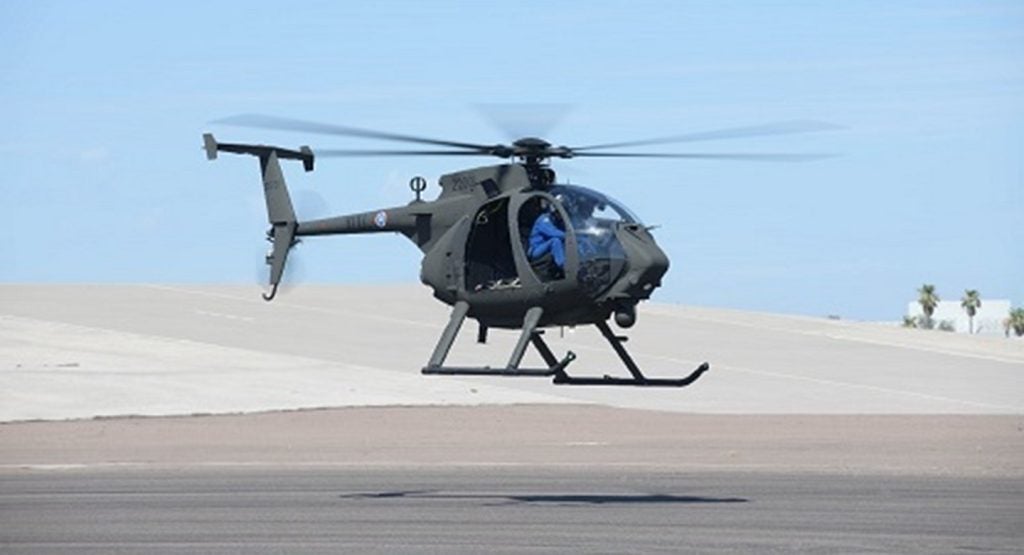The first of eight AH-6 Little Bird light attack helicopters due to enter service in the Royal Thai Army has flown for the first time.
Its inaugural flight took place at the end of August at Boeing’s Mesa, Arizona facility, the manufacturer revealed in a statement on 4 October 2024.
Little Bird is designed to perform a wide range of missions including light attack, precision attack, anti-armor, close combat attacks, reconnaissance, security and escort, troop insertion and extraction, as well as combat search and rescue.
Notably, the AH-6 is closely related to the larger AH-64 Apache. The Little Bird shares at least 60% of the avionics and the mission computer featured in the AH-64D Block III variant, and the light attack helicopter may benefit from Apache modernisation efforts. This comprises a user ecosystem that is more than 40-years old and includes operators on almost every continent.
Moreover, this commonality may pave the way to greater US defence market attractiveness in the military rotorcraft sector.
All the more so given that Thailand, politically flexible on the world stage, maintains some openness in dealing with Russia, having procured Russian-built helicopters such as four Ka-32A11BCs and 10 Mi-17-V5 units between 2011 and 2021, but notably not after the unlawful invasion of Ukraine ensued.
This new Little Bird fleet was originally financed by the US Department of Defense as a Foreign Military Sale at the end of February 2022. The contract also includes spares, training devices, support equipment, and technical publications for the Royal Thai Army.
After completing Thailand’s fleet, Boeing will train Royal Thai Army pilots at its Mesa site and at US Army Yuma Proving Ground, where they will learn to operate the Little Bird.
The new light attack helicopter fleet is due to replace Thailand’s seven existing, but ageing, AH-1F Cobras – acquired from the US supplier, Bell Helicopters, between 1990 and 2012 – as part of the country’s defence modernisation efforts.









